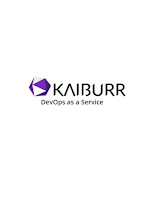Cloud computing has revolutionized the way businesses operate, providing scalability, cost efficiency, and enhanced performance. However, measuring success in cloud adoption requires tracking the right cloud adoption metrics. These metrics help organizations assess performance, security, and ROI, ensuring seamless cloud integration. In this article, we’ll explore essential cloud adoption metrics and how Kaiburr helps businesses optimize cloud strategies.
Why Are Cloud Adoption Metrics Important?
- Performance Optimization: Helps organizations identify bottlenecks and optimize cloud resources.
- Cost Management: Enables businesses to track cloud spending and ensure cost-effective solutions.
- Security and Compliance: Measures how well security policies and compliance regulations are implemented.
- Business Agility: Tracks how quickly an organization can scale and deploy applications.
Essential Cloud Adoption Metrics
1. Cost Efficiency Metrics
- Total Cloud Spend: Tracks overall cloud expenses to ensure budget adherence.
- Cost per User/Application: Measures the financial impact of cloud adoption per resource.
- Utilization vs. Allocation: Evaluates whether allocated resources are being optimally used.
2. Performance Metrics
- Application Uptime: Monitors system reliability and availability.
- Latency & Response Time: Measures delays in processing and delivering data.
- Scalability Performance: Analyzes how well the system handles increased workloads.
3. Security and Compliance Metrics
- Number of Security Incidents: Tracks security breaches, vulnerabilities, and threats.
- Compliance Adherence: Measures compliance with industry regulations (e.g., GDPR, HIPAA).
- Access Control Effectiveness: Evaluates role-based access management and security protocols.
4. Operational Efficiency Metrics
- Deployment Frequency: Tracks how often updates or new applications are deployed.
- Incident Response Time: Measures how quickly teams resolve cloud-related issues.
- Cloud Downtime: Evaluates business continuity by tracking outages and disruptions.
5. Business Impact Metrics
- Customer Satisfaction: Monitors user experience and satisfaction with cloud services.
- Revenue Growth: Assesses the financial impact of cloud adoption on business revenue.
- Innovation Speed: Measures how cloud adoption accelerates product development and innovation.
How to Improve Cloud Adoption Metrics?
- Optimize Cloud Costs: Use automated scaling and cost management tools to control spending.
- Enhance Security Measures: Implement multi-factor authentication, encryption, and continuous monitoring.
- Leverage AI and Automation: Automate repetitive tasks to improve operational efficiency.
- Improve User Training: Educate employees on best cloud practices to maximize adoption benefits.
Why Choose Kaiburr for Cloud Adoption Success?
- Data-Driven Insights: Provides in-depth analytics to track key cloud adoption metrics.
- Cost Optimization Solutions: Helps businesses reduce unnecessary cloud spending.
- Security and Compliance Support: Ensures organizations meet industry standards and regulations.
- Scalable Cloud Solutions: Offers cloud strategies tailored to business growth and agility.
Conclusion
Tracking cloud adoption metrics is essential for optimizing cloud performance, cost efficiency, and security. Businesses must continuously evaluate these metrics to ensure a successful cloud transformation. With Kaiburr, organizations gain valuable insights to enhance cloud adoption, reduce risks, and maximize ROI.
Start measuring your cloud success today with Kaiburr’s advanced cloud adoption solutions!




.jpg)


0 Comments